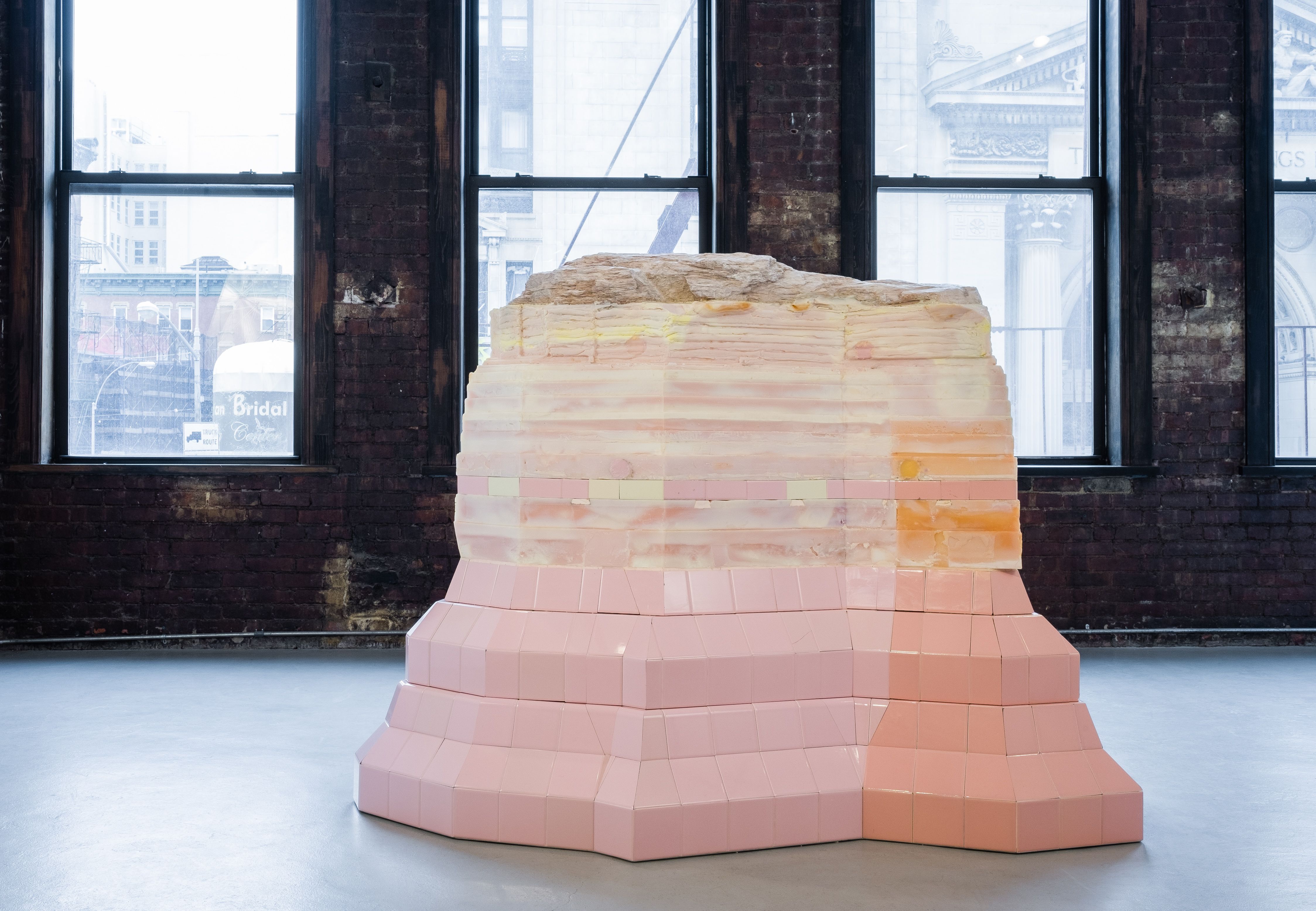TalctoTile, PL’d to MDO brings together a body of new work that plays with the never resolved relationship between an original and its copy. Each piece begins with a specific problem that Bamburg responds to based upon the demands of the material. The TalctoTile sculptures originate from large pieces of talc, a stone common in household products but rarely encountered in its non-pulverized state. The delicate rock’s surface and color led Bamburg to make a series of decisions to find a visual equivalent that continues the talc’s formal sentiment while still being distinguishable from the stone. Bamburg settled on homemade, large-scale slabs of cold process soap, which he layered one atop of the other. These works culminate with tile bases that come ever so close to the color of the soap. Bamburg does not make exact replicas or systems that continue in perpetuity, but creates instead synecdochal approximations that always come to an end.
There is a melancholic humor in Bamburg’s labor-intensive activities. His pieces undermine learned skill and technical facility, choosing to make manifest the process of problem solving: knowledge gained through action, the specter of failure always lurking. This is apparent in the unconventional diptych pairing a splayed cut from the trunk of a mulberry tree with its photograph. The organic Rorschach test has a haunted, anthropomorphic quality to it. Bamburg tried to capture the wood’s likeness exactly in the photograph by doing everything he can to make the colors correspond one-to-one. In order to maintain consistency, however, he needed to encase and preserve the wood, suspending the natural process of decay in the name of fidelity to an image.
Each piece in TalctoTile, PL’d to MDO has an internal fate, a set of conditions Bamburg follows, as the possibilities left to him narrow. He bases every work upon a simple principle of form-to-function, the form always extending to the absolute limits of its functionality. Within this system Bamburg always makes a choice, and always assumes the consequences. He never turns back or alters the object’s internal logic in order for a more desired outcome. In accepting his work’s form-function destiny, Bamburg hopes his concatenations of material transcend their limitations into something beautiful, something utterly unexpected.















































































































